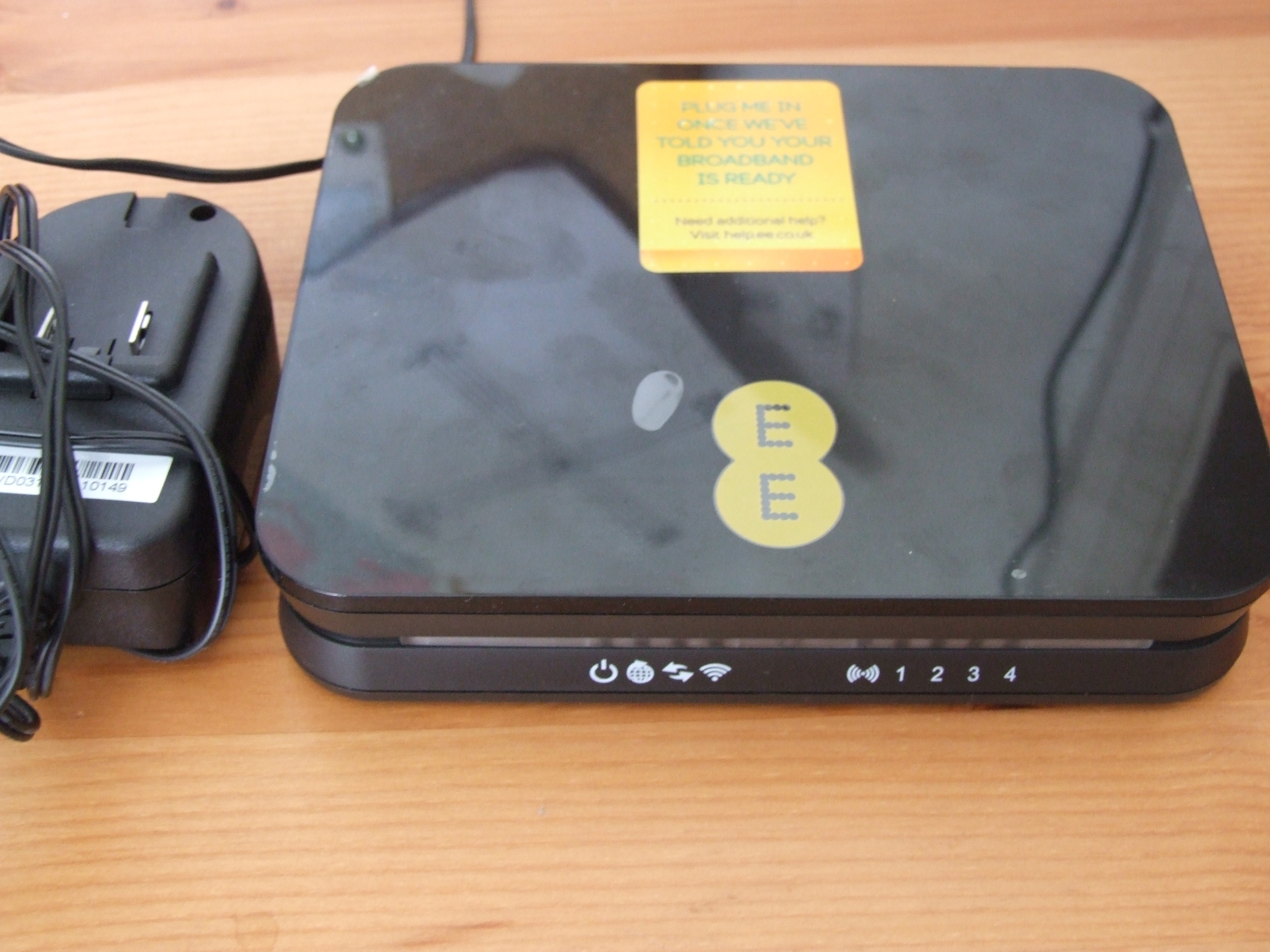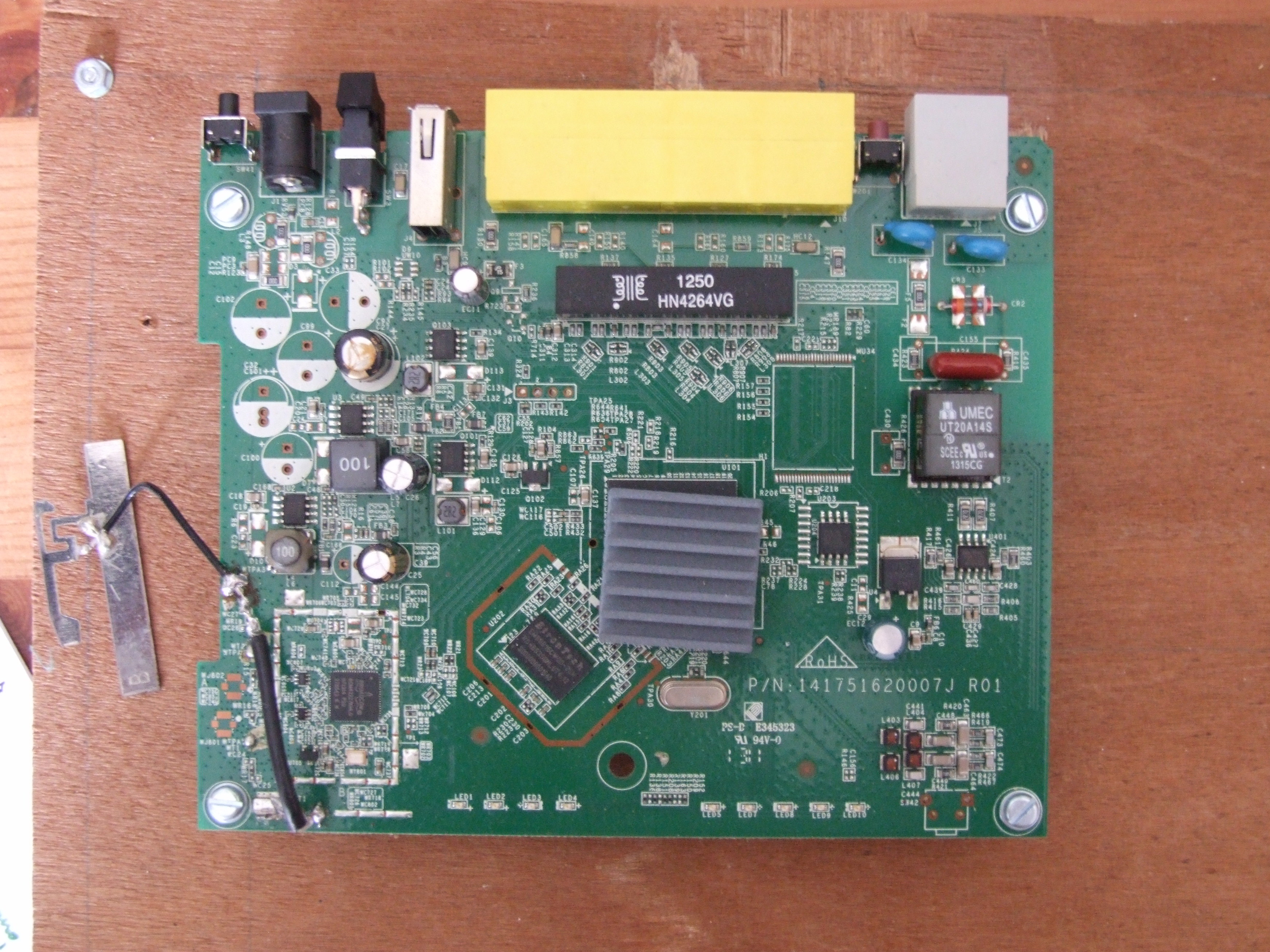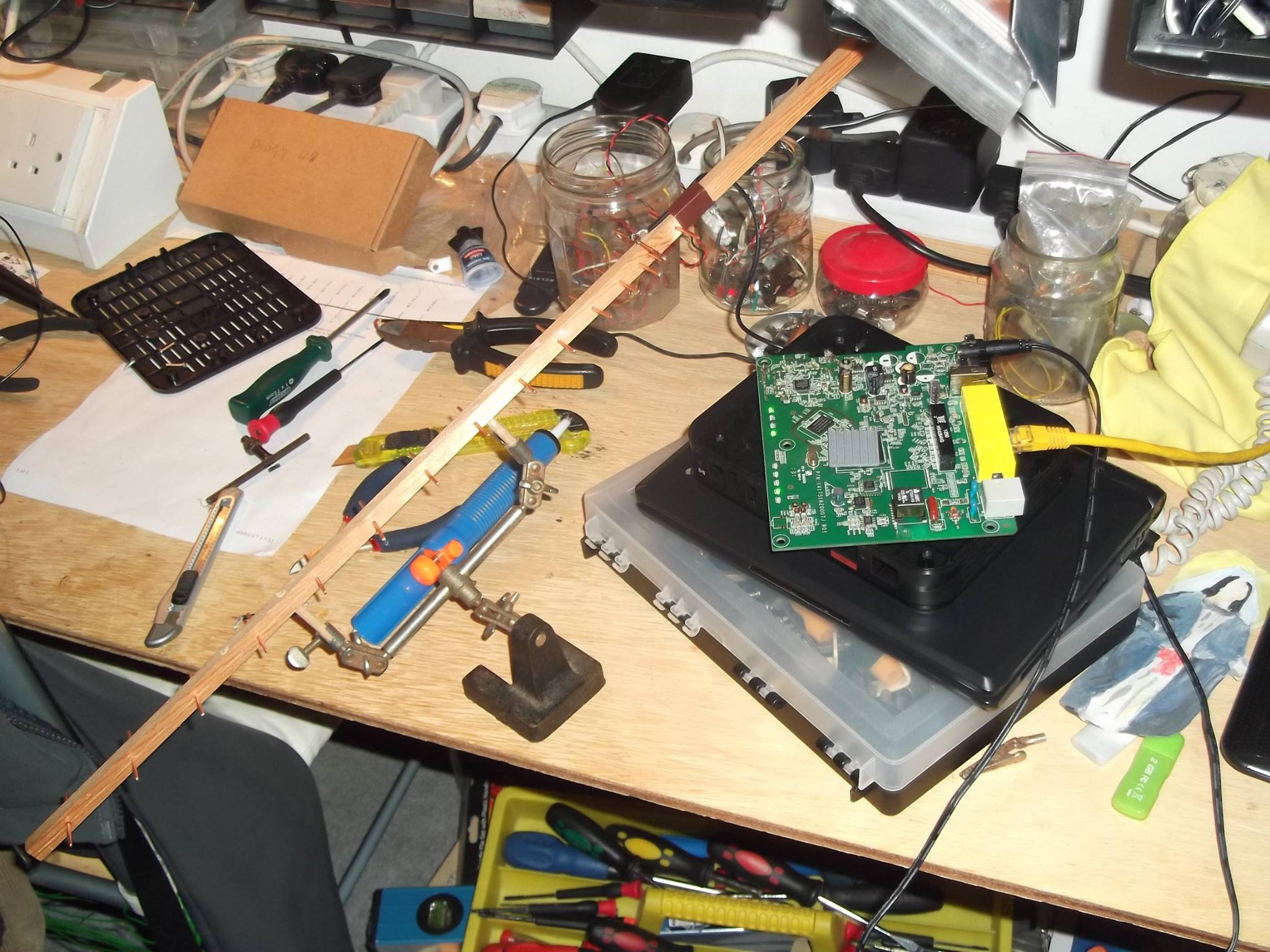Embedded Linux is currently all the rage with little boards like the Pi running a full-fledged Debian just to flash a few LEDs. Now certainly, the Pi would find uses here, but it’s hardly cheap. What is cheap—or even free—is defunct wireless routers. They, too, are embedded systems running Linux. Unlike the Pi they have on-board wifi and an ethernet switch; the cpu isn’t usually too bad either. I also picked a few up for £0.99 on Ebay. Here’s one:
and here’s what the board looks like, minus one of the antennas and with the two antenna outputs connected together—a really questionable thing to do which seemed a good idea one evening. I was using a pair of these for an extended wifi signal with home-made (untuned!) Yagis:
In fact the wifi hardware, at least under OpenWrt, isn’t really up to it: it keeps re-connecting and I never figured out why. But enter OpenWrt or these days LEDE which apparently is to merge back into OpenWrt and take over the name (in the meantime you should use LEDE, it’s more up-to-date): originally alternative firmware for the venerable WRT54G, it’s now a generic embedded network Linux, and it ‘unofficially’ supports these routers. Installation is straightforward and on boot you can ssh in and start setting things up. The only drawback is disk space, which is in the few tens of MB. OpenWrt/LEDE uses a strange system with a read-only ultra-compressed filesystem uncompressed on the fly and a read-write compressed file system to store only changes to the read-only system to enable modification (think of it like persistent storage on a memory stick, if you’ve ever run linux off a memory stick). Fortunately these things have a usb port, and we can put another compressed read-write filesystem on one, and then use the on-board filesystem to make that the root; we can even mount other filesystems on the memory stick in an ordinary sensible way. Even more fortunately, all this shadowed-file-system stuff is handled transparently by the kernel, and we don’t (usually) have to think about it.
Follow the instructions somewhere like here and remember that there’s no point installing anything except usb support before setting it up as the internal / is only accessed during boot in order to transfer to the external.
Need more usb devices? Use a hub: the standard takes care of those. GPIOs? Available on the board, and quite a few free on this one. I do not know who had the time or energy to trace those…
One of these formed the basis of a clock I built, which will get posted here at some point; another is currently on the bench as part of an internet keepalive, which I should really write up. They’re really quite flexible, and the best thing is that they’re dead cheap.


